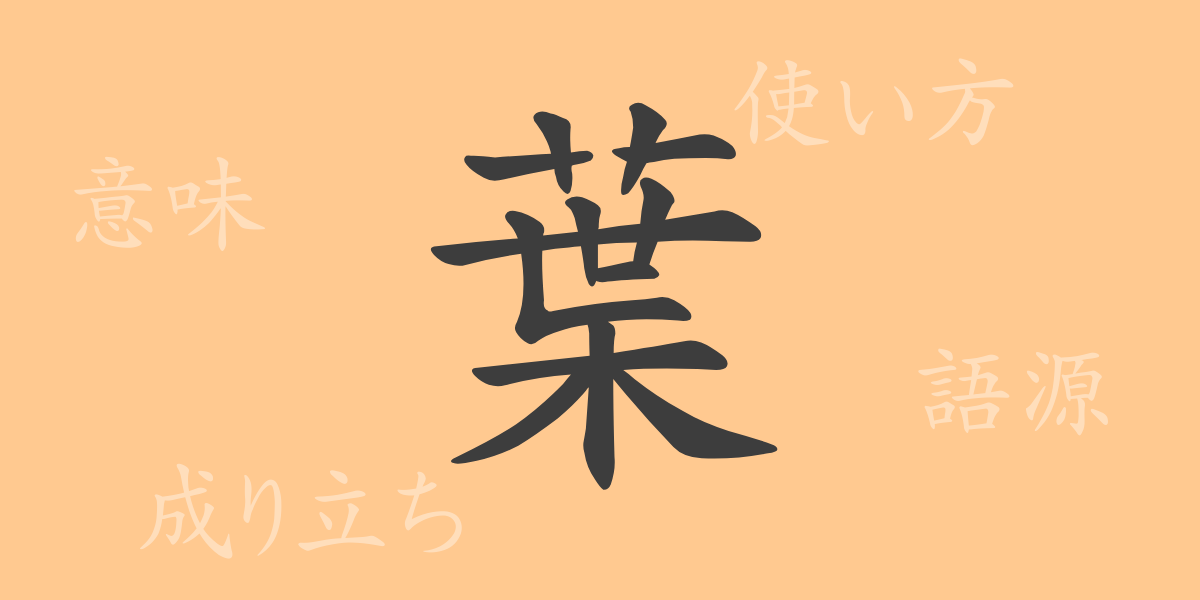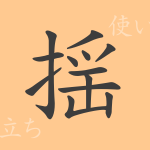The Kanji (漢字) “葉” (は – ha), deeply rooted in Japanese culture and evoking the breath of nature, reflects the delicate beauty of the natural world and the Japanese mental landscape. This article delves into the charm of the commonly used Kanji “葉” (は – ha), exploring its etymology, various modern usages, and even inspiring idioms and proverbs. By understanding the profound meanings behind each character, let’s embark on a journey to rediscover the richness of the Japanese language.
Etymology of 葉 (は – ha)
The character “葉” (は – ha) is a pictogram representing the “葉” (は – ha) of plants, intricately tied to human life as a part of the natural world since ancient times. This Kanji is composed of the radical “木” (き – ki), meaning “tree”, and the phonetic component “世” (せ – se). Symbolizing natural growth and prosperity, this character, born in ancient China, represents the vitality of plants and the changing seasons.
Meaning and Usage of 葉 (は – ha)
“葉” (は – ha) originally refers to the leaves of plants. However, its usage is extensive. For instance, in the word “紅葉” (もみじ – momiji), it is used to depict the autumnal scenery, making it indispensable for conveying seasonal feelings. Additionally, in the form “言葉” (ことば – kotoba), it refers to the words or voices people utter.
Reading, Stroke Count, and Radical of 葉 (は – ha)
“葉” (は – ha) is one of the Kanji with particularly diverse readings in Japanese.
- Readings: In On-yomi (音読み), it is read as “ヨウ” (よう – you), and in Kun-yomi (訓読み), it is read as “は” (は – ha).
- Stroke Count: It has a total of 12 strokes.
- Radical: The radical is “艸” (そう – sou) or “草冠” (くさかんむり – kusakanmuri), which means “grass crown.”
Idioms, Phrases, and Proverbs Using 葉 (は – ha) and Their Meanings
Idioms, phrases, and proverbs containing “葉” (は – ha) are widely used in Japanese. Here are some examples:
- Idiom: “落葉樹” (らくようじゅ – rakuyouju) – Trees that shed their leaves in autumn.
- Phrase: “葉を茂らす” (はをしげらす – ha wo shigerasu) – Describes a state of remarkable growth or development.
- Proverb: “葉を見て木を知る” (はをみてきをしる – ha wo mite ki wo shiru) – A metaphor for inferring the whole from a part.
Summary of 葉 (は – ha)
The Kanji “葉” (は – ha) has been deeply intertwined not only as a part of the natural world but also as a word expressing Japanese sensibilities and thoughts. The landscapes woven by its shapes and colors convey the emotions of the changing seasons, symbolizing the beauty of the Japanese language. Although “葉” (は – ha) is frequently seen in daily life, it breathes with rich history and culture. Through this character, one can truly feel the depth of the Japanese language.

























